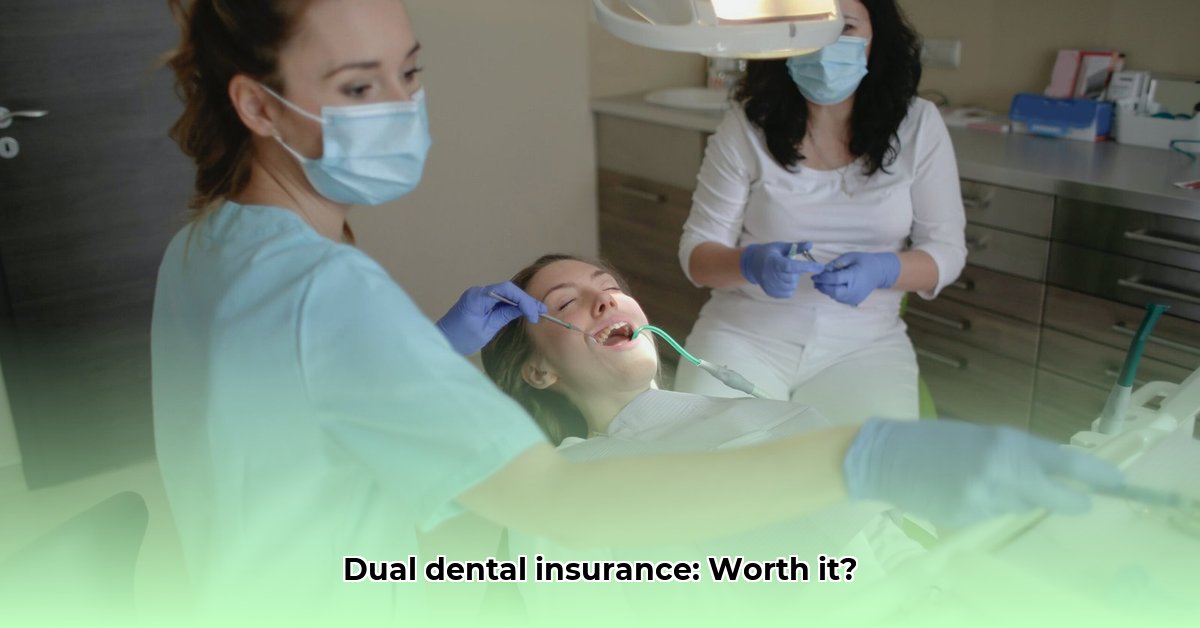
Thinking about having two dental insurance plans? It might seem like a smart move – more coverage usually means lower out-of-pocket costs, right? Not necessarily. This article will help you weigh the pros and cons of dual dental insurance to determine if it's the best option for your individual circumstances. We'll examine potential cost savings, access to a wider network of dentists, and the potential complexities you might encounter. Ultimately, the decision hinges on a careful assessment of your specific needs and financial situation.
Potential Advantages of Dual Dental Insurance
At first glance, the appeal of double dental insurance is undeniable. The promise of more comprehensive coverage is alluring, particularly when facing significant dental procedures. Let's examine the potential benefits:
More Comprehensive Coverage: Two dental insurance plans could result in significantly reduced out-of-pocket expenses for extensive procedures like implants or extensive restorative work. However, this isn't guaranteed. The actual cost savings depend entirely on the specific terms of each policy and the type of dental work required. If one plan only covers routine cleanings while the other covers major procedures, you might still incur substantial costs.
Wider Network of Dentists: A key advantage is broader access to dentists. This is especially beneficial if you prefer your current dentist, who might not be in the network of your primary plan, or if you need a specialist not covered by your primary insurer. A bigger network offers greater flexibility in choosing a provider who meets your needs and preferences, potentially offering shorter wait times or more convenient hours.
Potential Cost Savings (Conditional): While it might appear that double the coverage equates to half the cost, this isn't always the case. Real cost savings depend critically on how the “allowed amount” (the maximum amount each insurer will pay for a procedure) for each plan interacts. If the combined allowed amounts exceed the total procedure cost, you could save money. However, if the combined allowed amounts fall short of the total cost, you'll remain responsible for the difference. Closely examining the plan details is crucial.
Potential Drawbacks of Dual Dental Insurance
While the allure of enhanced coverage is strong, it's essential to consider the potential disadvantages. Let’s analyze the potential downsides:
Higher Premiums: A Significant Expense: The most obvious drawback is the increased monthly cost. Two premiums inevitably cost more than one. This added expense can easily negate any potential savings from increased coverage, especially if your dental needs are minimal. This factor is vital – if you rarely visit the dentist, the extra cost is unlikely to be justified.
Coordination of Benefits (COB) Complexity: This is where things get complicated. Coordination of Benefits (COB) is the process determining which plan pays first and how much each contributes. It's a complex system; navigating it can be a significant burden, potentially leading to delays in reimbursements, claim denials, and increased administrative hassle. Furthermore, state-specific regulations governing COB procedures add another layer of complexity.
"Allowed Charge" Limitations: A Reality Check: Even with two plans, coverage isn't unlimited. Each plan has a maximum amount, the “allowed charge,” it will pay for a specific procedure. If the combined allowed charges from both plans don't cover the entire cost, you are responsible for the remaining balance. This could leave you with a substantial bill despite having dual coverage.
Making Informed Decisions about Dual Dental Insurance
Deciding if dual dental insurance is right requires careful consideration. Follow these steps toward an informed decision:
Comprehensive Policy Comparison: Don't just compare premiums; meticulously scrutinize the terms and conditions. Pay close attention to the COB clause (Coordination of Benefits), understanding how benefits are coordinated, which plan is primary, and the procedures if a claim is denied.
Seek Expert Advice: Consult a financial advisor or insurance broker. They can help you objectively weigh the pros and cons within your specific financial context and determine if the extra cost is justified. Their expertise can also help you navigate complex insurance language.
Realistic Assessment of Dental Needs and Budget: Honestly assess your anticipated dental expenses. If you rarely need dental care, the extra premium might not be worth the potential benefits. The higher premiums might simply not be cost-effective.
Understand State Regulations: COB rules are state-specific. Research your state's regulations, as these significantly impact how your two plans interact.
The Bottom Line: A Personalized Decision
The decision of whether or not to have two dental insurance plans is ultimately a personal one based on your individual needs and circumstances. Increased coverage doesn't automatically translate to lower costs. A thorough assessment of your situation—including your anticipated dental expenses, financial capabilities, and understanding of COB—is vital before making a decision. Don't solely focus on the potential advantages; equally consider the potential drawbacks.